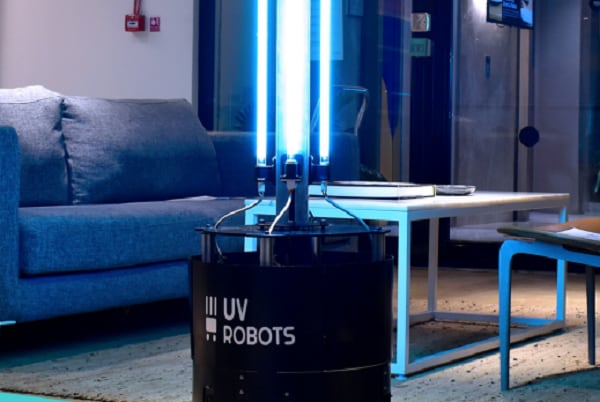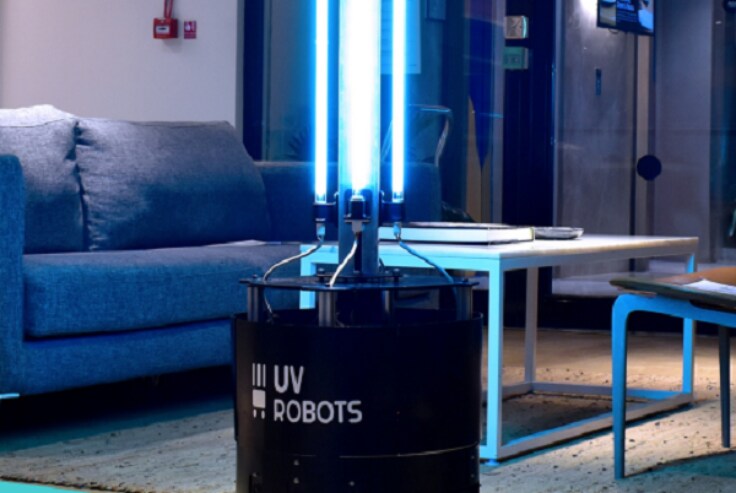
Autonomy of service robots
From serving food in restaurants to disinfecting public spaces, these robots can do it all. UV Robotics team is developing ground based autonomous robots with diverse functionalities.
Arnav Bisoi and Team: UV Robotics Limited
Arnav Bisoi, from the UV Robotics team said, “We introduced our first robot in restaurants, which could deliver food from the restaurant’s kitchen to the customer’s tables. This ensured contactless delivery and eased the burden on the restaurant employees. As the COVID pandemic hit, it affected the robotics industry, and we were looking for ways to adapt our product. We identified the need to automate repetitive tasks such as disinfection activities in hospitals and other public places. That’s when we decided to install Ultraviolet Germicidal Lamps in our autonomous robots.”

Lighter and energy efficient robots
“I analyzed the mechanical properties of the 3D printed parts by adding carbon fiber material in my analysis. The goal was to optimize the shape of the parts such that there it has minimal failure points and can take up heavy compressive loads. We were able to 3D print the chassis weighing 6 kgs which can take loads up to 100 kgs,” explained Arnav.
3D printing with carbon fiber is challenging
In 3D printing, the filament must be heated before commencing with the printing operation. “Basic prints using carbon fiber can take up to 24 hours. During this period the filament absorbs significant moisture. We had to use drying boxes to ensure that the prints were moisture free. On the other hand, 3D printed parts are not very UV light friendly. So, we must figure out what kind of paints and coatings can be used to prevent delamination of the printed parts,” Arnav added on. Once the desired part is 3D printed, it has to undergo a lot of post-processing. The post-processing consists of finishing the surface, applying primer to the layers and removing moisture from it. The entire process can take up to 12 hours.

Modularity is cost effective
“We are also building custom modules that can be attached on the top of the robots. The modules would be customized depending on the customer specifications. The robot can essentially function as a screen and a camera with an attached disinfecting bulb,” explains Arnav. The modularity in robots would significantly reduce manufacturing costs as they can potentially save on material by keeping the base same for performing multiple functions.
The 3D printing challenge came at the perfect time
“We stumbled upon the advertisement of the 3D printing challenge on the Wevolver page on Instagram. It was a pure coincidence as it was something that we were working on already. I have spent a year researching on carbon fiber and 3D printing. Many people don’t utilize 3D printing to its full potential. They only use it for prototyping. We believe that it is equally good, if not better to manufacture the final product,” he said.

